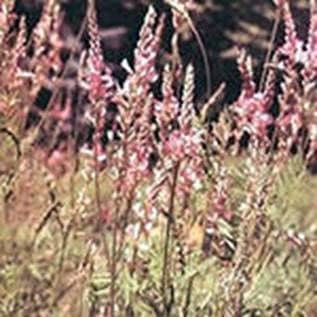
A sainfoin is a herbaceous perennial plant of the legume family. Has a little leaf stalk with a rosette of rosette leaves. The latter are complex, odd-numbered. The flowers are collected near the inflorescence. Individual flowers are large, pink or red. Fruit is an undisclosed bean.
Cultivated the plant in many areas on an area of 76 thousand hectares.
Espartet – a good honey plant. Begins to allocate nectar at the time of flowering and produces it especially, the more often and more intensively it is selected from flowers by honey bees.
The sainfoin blooms in late May – early June for 2-3.5 weeks. One flower of sainfoin allocates from 0,250 to 0,320 mg of sugar in nectar, honey production of 1 hectare of crops of 72-120 kg. Under favorable weather conditions, the seeds manage to collect up to 4 kg and more honey per day.
From sainfoin, commodity honey is obtained, which has an amber, light amber color, sometimes with a greenish tinge, a faint floral smell, a sweet, pleasant taste. It crystallizes after 3-6 months, crystallization can be finely coarse.
Espartic honey contains 25-31% of glucose and 43-48% of fructose, the diastatic number varies from 15 to 22 Goth units.
Bees willingly collect pollen from flowers of sainfoin. It is recommended to collect industrial bees during its flowering. From 1 hectare, 168-179 kg of pollen are collected.
Биовит для пчел. Метка пчеломаток.
Медоносы